Xbox has graced the presence of gamers worldwide for almost 20 years. Since then, it’s evolved through four different iterations of form factor, speed and hardware as technology enabled it to. The original Xbox set its own grounds by repurposing PC internals for a gaming system. This also broke the ground for some important franchises, including Halo which literally evolved combat for first person shooters to come. But Xbox has since kept their formula for giving players top-tier hardware with every generation, cementing their own status for sequels which improve along with a new console. Microsoft’s own investment grew from a simple black box, into an entire company sustained by a strong community draped in green.
Flash forward to 2020, digital lines are forming behind the brand new Xbox Series X. It stands on its own to push interactive media forward, by preserving the favourites with backwards compatibility and opening new exclusive doors for players. Like another last spike finishing a railway, the Series X’s launch marks another long road for developers and gamers. With enough next-gen hardware to push past limitations, creativity is given more open-world to explore and even bigger stories to remember. There’s less of a focus for green and blue consoles when gamers are following their favourite franchises down to the next decade. To commemorate the birth of the Series X, CGM is filling another page on the baby album and looks back at what made Xbox special.
2001 – 2009: Xbox is born!
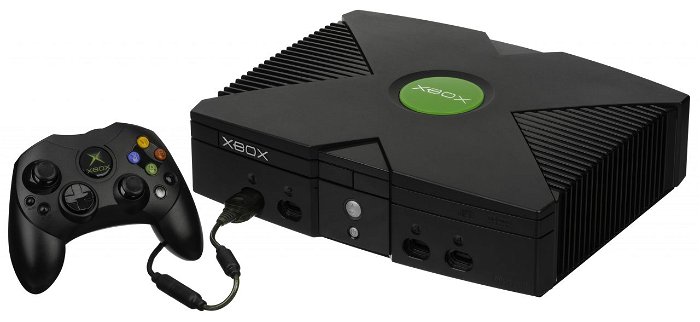
Microsoft had already won the hearts of businesses globally with its launch of the Windows 2000 operating system. But the OS’ computing power also worked as an effective canvas for drawing up expansive 3D universes. Conveniently, Microsoft was working on ways to generate 3D assets for engineering, animation and other forms of creation. Enter DirectX: A framework for software that used the power of Windows to render 3D objects. This was when chief developers including Alex St. John, Eric Engstrom and Craig Eisler realized DirectX was exactly what they needed to join the game industry – a market which was dominated by Sony at the time. Though Sony had relied on third-party devs for ushering in 3D games, Microsoft had their own solutions. This would become the starting point for creating games like Halo Combat Evolved, one of the first to be developed in-house with DirectX and Windows 2000 architecture.
With Microsoft heads being shy to enter the game industry, the “Beastie Boys” trio allegedly stole company assets to build the graphics tool. It became powerful enough to blow past the poly-based graphics from Sony’s PlayStation and presented smooth surfaces and dynamic shaders. According to VentureBeat, Bill Gates had his own epiphany with video games after speaking with Sony’s then-CEO Noboyuki Idei before the PlayStation 2 launch in 1999. There, Gates hoped Sony would use their Windows and Microsoft tools for game development in a partnership. Ultimately, Gates was turned down by Idei and “flew into a rage.” Seeing the threat of PS2 against the Windows PC’s entertainment value, the encounter pushed Gates to Microsoft’s engineers with a request: make a console to compete with Sony.
Ironically codenamed Midway to represent the WW2 American/Japanese conflict, Gates would join forces with the “Beastie Boys” to build the console. It would harness DirectX 8.1 and use Windows 2000 to build a 3D interface. Because the console’s framework was Windows, it became easier and more accessible for PC devs to make console games for the first time. The CPU and GPU were also fashioned like a PC, giving developers a way to join the console wave. It also meant PC games could also be easily ported, giving players options which would foreshadow Xbox’s cross-platform experiences in 2020. The console’s original name would have tied to Windows’ 3D tool and almost became the DirectXbox or Microsoft Interactive Network Device (MIND).
The Xbox was officially revealed at CES 2001, complete with Dwayne “The Rock” Johnson and his snazzy shades. Both touted the Xbox as an all-in-one entertainment system that could play the latest games, DVD movies and include an ethernet connection (without expansions) for deeper levels of content. Like The Rock, it would be the “most electrifying thing to come this year.” At E3 2001, Xbox showed off its exclusives, including Dead or Alive 3 and Halo Combat Evolved which gave audiences a promising glimpse into 3D gaming.
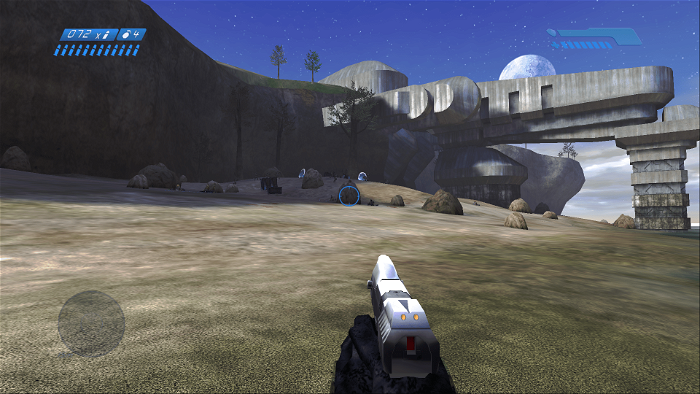
The Xbox was launched on November 15, 2001, over half a year after the PlayStation 2 came out. Both would modernize the shared releases of third-party games across platforms while butting heads with their own exclusives. The Xbox brought almost 20 games for players on Day One, including Halo, Oddworld: Munch’s Oddysee, Fuzion Frenzy, and Project Gotham Racing. As the green community grew with Halo‘s multiplayer, so did a love for the system that kept on giving. It would see a healthy serving of games to keep Xbox owners happy, including the Ninja Gaiden series, Beyond Good & Evil, the Splinter Cell series and Star Wars: Knights of the Old Republic. A big partnership with SEGA led to a pipeline of 11 exclusive games, birthing notable classics like Panzer Dragoon Orta and Jet Set Radio. In 2002, players could finally join online multiplayer matches with the Xbox Live service. Using the built-in ethernet, players could subscribe and unlock downloadable content/updates with their favourite games.
As the Xbox put Microsoft into the gaming spotlight, they struck gold in 2004. Along with the PlayStation 2, Microsoft saw an uptick in sales with the release of Grand Theft Auto: San Andreas. Players had bigger reasons to choose the Xbox as an all-purpose gaming option, while basking in bigger exclusives like the original Fable which launched in the same year. But the icing on the cake became Halo 2, which became a killer Xbox app and an influential shooter with Hollywood-budget storytelling and one of history’s biggest entertainment launches of all time. This cemented the Xbox and all of its future iterations to come as a machine for Halo and spawned a franchise which would keep growing. Ahead of another console generation, the Xbox made a home for itself in the hearts of gamers over the early 2000’s and ended with over 24 million lifetime sales. The console was discontinued in 2009 and was removed from major retailers.
2005-2016: Xbox 360 changes gears
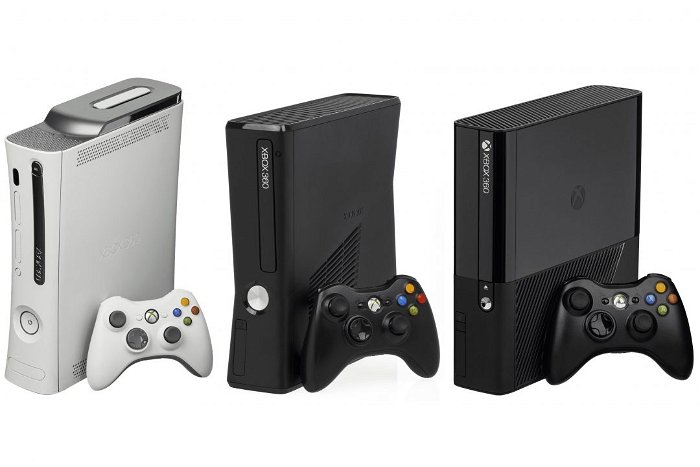
Microsoft didn’t look back after creating their revenge-console, made to compete with Sony following Gate’s fateful meeting. But along the Xbox’s journey, Microsoft found its own inner-peace in the gaming world. It set out to create a successor which doubled-down on what made the original system work so well. From deeper lighting effects, to its modified PS3 CPU and increased memory for massive in-game assets, the Xbox 360 would be a brand new option for players entering the seventh generation of games. It’s foundations were in place to gather PC-based internals with IBM Xenon CPUs and ATI for its graphics engine. The original Xbox’s success won over IBM, who helped out by optimizing their cell processor for the 360 and modified the PS3’s version for Microsoft. This gave the system a wide potential for high-fidelity games against the PlayStation 3’s library of premium franchises while third-party ones ran identically. Gone were the days of experimenting with 3D polygons, as the Xbox 360 and PS3 hosted games which ran as great as they looked. This became the direction for Microsoft, who funneled more resources into their Game Studios department for content.
The Xbox 360 launched in North America on November 22, 2005. On Day One, players enjoyed games such as FIFA Soccer 06, Peter Jackson’s King Kong, Ridge Racer 6 and Need for Speed Most Wanted. Exclusives like Perfect Dark Zero, Call of Duty 2 and Quake 4 made the Xbox 360 a contender until further games were released down the pipeline. For first buyers, the wait paid off with the birth of the Crackdown series that gave Microsoft Game Studios their own answer to open world action games. But the Xbox 360 raised eyebrows with an original science-fiction shooter created by Epic Games. It would take on a gritter setting than a familiar world like Halo while it refreshed third person shooters when games such as Uncharted or Ratchet and Clank were drawing consumers to Sony.
Called Gears of War, it was a surprise hit that was released to a standing ovation from gamers while it set new bars for the Mad World ad alone. The game quickly made the Xbox 360 a killer app, so much that it turned into one of 2006’s highest selling games. The series would continue to grow with three more titles under the Xbox 360, including Gears of War 2, Gears of War 3 and Gears of War Judgment. The Gears franchise also shined a spotlight over Xbox Live as one of its biggest games played over online through co-op. Impressively, the Xbox 360 didn’t need an evolution in order for each Gears game to look like a next-generation beast, somehow managing to run at 30 frames with some of the console’s best graphics. This propelled the Xbox 360 into a formidable foe for the PlayStation 3 and was adopted by just as many owners worldwide.
Gaming on the Xbox 360 and PS3 hit a big change with the release of Call of Duty 4: Modern Warfare, which yet again revolutionized shooters for consoles and the online competitive scene. It became one of the 360’s most popular games to play over Xbox Live while further annual installments would keep green gamers happy. Eleven games, spanning from the original 2003 Call of Duty to Black Ops III in 2015, were released for the 360 and cultivated the Xbox Live community. Single players also enjoyed occassional exclusive hits, including Alan Wake which was made in tandem with a loyal Remedy Entertainment (Quantum Break, Control).
If you thought Call of Duty was enough to deem the Xbox 360 a household appliance, Bungie and Microsoft would take full advantage with their greatest asset: The Master Chief.
At this point, the green SPARTAN had become a sort of pop culture icon for gaming and the first thought for Xbox. He evolved with brand new next-generation hardware the Xbox 360 offered. In one of the most epic marketing campaigns, development stories and launches in video game history, Halo 3 caused a global frenzy for the Xbox 360. It somehow managed to triple-down its cinematic storytelling into a fitting end. Bungie also perfected the already-perfect gameplay from its predecessor. Halo 3 would become one of the most anticipated video games to exist in recent memory, putting most of the Xbox 360’s values into overdrive. Its $300 million first-week game sales caused ripples, doubling the Xbox 360’s sales.
Halo 3 would be influential enough to make Xbox Live an essential subscription service for 360 gamers. At the time, the PlayStation 3’s own PS Plus service would be in its baby steps while Microsoft had mastered an art of providing premium features and content monthly. The multiplayer aspects of Halo 3 also took over COD4 after release and continues to be a leading title for competitive eSports. It was also one of Bungie’s final games before they moved onto other properties beyond Halo. The franchise was big enough to make the Xbox 360 a real threat to Sony through its golden age for Halo games. It’s easy to consider Combat Evolved and Halo 2 as testing beds for what came on the 360. Across the 2000’s, Microsoft Studios and Bungie released three times the amount of Halo games compared to the original Xbox. Even after Master Chief’s trilogy, five more games spawned annually until the end of the 360 life cycle. Halo Wars, Halo 3 ODST, Halo Reach and Halo Combat Evolved Anniversary gave players a reason to keep loving their systems unconditionally in a sea of third-party titles shared with PS3.
Unlike the PlayStation 2 which released with a slim version, the original Xbox had stayed in its own body from start to finish. For the Xbox 360, Microsoft had taken on a similar strategy to refresh its console with smaller, faster form factors. In a first, the Xbox 360 was given two updates: Xbox 360 S and the Xbox 360 E. The S-model launched in 2010 with built-in Wi-Fi and power efficient hardware. The E-model released in 2013, paving the way for the next generation and sported a compact form-factor that looked eerily similar to the Xbox One console.
The Xbox 360’s hardware iterations came with some new innovations for physical games. As the Nintendo Wii created a hyperactive boom in games, Microsoft built the Kinect in hopes of capturing the same success. On November 10, 2010, the add-on camera was released with an exclusive series of Kinect games. In an effort to boost sales, it was also bundled with most Xbox 360 consoles. This strategy, combined with the physical activity frenzy, worked for a short time. The Kinect also claimed the Guinness World Record for selling 10 million units in a month – making it one of the fastest-selling devices ever made. The peripheral would give the Xbox 360 new flavour and extend its value in the face of competition with the Wii and PlayStation Move.
The Xbox 360s, like all other consoles at the dawn of new ones, were beginning to show their age. After serving gamers for eight years, the next generation of the Xbox was on its way. As a final love letter, the newly-minted 343 Industries developed one more Halo game for the Xbox 360. Pushing its hardware to the limit, the game would also be important in giving the series a new direction. Simply named Halo 4, it was the first “preview” of what came through the Xbox One and showed off near-next-gen graphics using the 360’s mileage. It was also the latest chapter which started The Reclaimer Trilogy of Halo games for future generations. Like previous games, critics and players loved Halo 4‘s modern formula perfected through the Xbox 360 installments. The Xbox 360 somehow ended an entire trilogy and started a new one under a single life cycle. Halo 4 became a worthy send-off for this fabled console. Microsoft had become a staple name in the gaming world. The Xbox 360 gained over 84 million in lifetime sales. Life was great for Xbox fans.
2013 – Present: Xbox One and fall


The term “next gen” had been at the forefront for Xbox One, which scaled its rumored name back by 719 figures. Throughout its stunted growth, the Xbox One console would take some steps backwards from what made the 360 a force to be reckoned with. Its exciting magic of new franchises and flow of exclusives were suddenly boiled down to occasional sequels. Halo and Gears of War continued enticing a respectable player base to invest in an Xbox One, though Sony had taken full reigns for groundbreaking AAA content in-house. This push for original content gave Sony two steps ahead as Microsoft came down from their 360 rush. In a tried and true process, the Xbox One would strive to be a definitive system that continued pushing through the current generation of games.
The Xbox One would have enough inner workings for next-gen performance. From its 1TB HDD support to its 1.75 GHz AMD CPU, the system could take the load off its AMD Radeon GPU and render photorealistic visuals with 60fps gameplay. The Xbox One struck the right chords as a next-gen option, launching on November 13, 2013 with its biggest Day One library to date. Owners were already being treated to a promising future of games with third-party developers. Titles like Assassin’s Creed IV Black Flag, Call of Duty Ghosts, FIFA 14 and Watch Dogs were among some of the 25 launch games to impress Xbox One owners. The feeling of next-generation power was given in exclusives like Dead Rising 3, Killer Instinct, Ryse Son of Rome and Forza Motorsport 5, delivering Xbox’s own brand of exotic gaming justice. Its first lineup was formidable, giving Xbox One owners a renewed faith from their time with the 360.
But the last console had also set higher expectations on the Xbox One, which ultimately proved to be a challenge for the studio as exclusives dried up.
Both developers and players had entered the age of remasters, which gave Microsoft an opportunity to fall back and grow the Xbox One’s library with 360 games. Using its beefier hardware, it could finally take away the limitations which set Halo 4 back. This also gave 343 Industries a bold idea: to remaster much of the main Halo series with added improvements. Upscaled visuals were mixed with a buttery-smooth 60 frames per second and gave Halo Combat Evolved Evolved Anniversary, and Halo 3 a new life with a definitive multiplayer. In the case of remastering Halo 4 for the Xbox One, the latest game was already ahead of its time over the 360. The game ran as if it was originally made for the Xbox One. But the bread-and-butter was Halo 2 Anniversary which was a complete remake-master that updated the 2004 game with next-gen assets and redesigned cutscenes. Having Halo ready for next gen, along with the revived Halo 2, was a large selling point for the Xbox One. Halo The Master Chief Collection was an ambitious release which came a year after the console’s launch. But it also suffered numerous bugs and a lack of console owners for proper online matchmaking to happen. This was enough to draw prospective Xbox One buyers away as they flocked to the PlayStation 4 for its Uncharted collection and other original remasters.
The Master Chief carried Xbox yet again over the eighth console generation and was pivotal for sales across the mid-2010’s. It became the Xbox One’s notable killer app, sustained by other brand new IPs (in the same way the 360 introduced sleeper hits). A ragtag Respawn Entertainment started on the Xbox One with science-fiction mech shooter Titanfall, which took full advantage of Xbox Live for a completely multiplayer-based experience and subtle storytelling. Exclusive on Xbox One and PC, it helped shed some light into the console’s ability for quality over quantity. For some awful reason, futuristic shooters had also become a trend for next generation games. This was where Halo 5: Guardians became the Xbox One’s biggest card to play as it tried leading the series into the modern shooter scene. But it strayed too far from its roots, with the game having the lowest Halo launch sales to date. It was also polarized for its campaign, which lacked a no-nonsense flair from games before. Halo 5 still held its own as a killer app alongside the Master Chief Collection, which essentially made the Xbox One a current gen Covenant-killing machine. With Halo Wars 2, there have only been a total of three original Halo releases on Xbox One (compared to six over the 360).
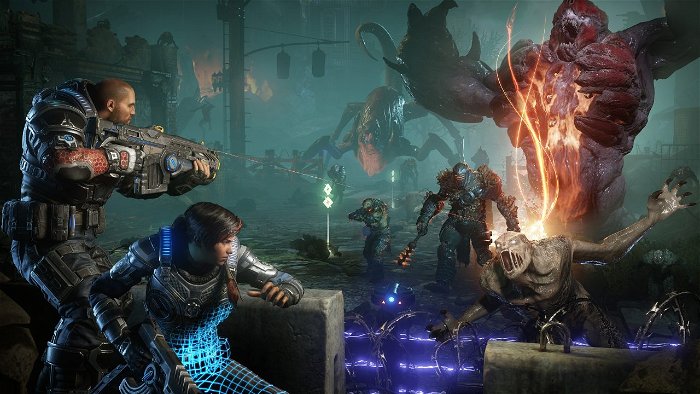
Gears of War also saw less releases on the Xbox One, unlike its breakout surge over the Xbox 360. Gears of War 4 took on a Star Wars Episode VII approach in storytelling which absolutely worked. The game revitalized Gears of War for its new system and attracted more Xbox One fans in the process. Gears of War 4 was also important in fine-tuning Xbox’s Play Anywhere feature. This was a promise to release Xbox One exclusives over the PC platform, ushering the days where Microsoft valued Xbox and Windows as gaming systems. But putting exclusives on PC meant giving players another system altogether. To an extent, the Xbox One saw less sales as PC gaming saw a resurgence in the 2010’s. It cannibalized some of Xbox One’s exclusives, but Microsoft continued to invest in the PC gaming community. This created the unprecedented, long-awaited dream of bringing Halo The Master Chief Collection to PC, breaking the Xbox One’s significance for playing the franchise on its hardware. Gears did keep its presence on the Xbox One with PC-concurrent releases. Gears of War: Ultimate Edition remastered the last-gen sleeper hit while Gears of War 4, Gears 5 and Gears Tactics kept Xbox One owners in the loop.
The Xbox One’s library continued to grow with a decent amount of exclusives, just as PlayStation went full-speed starting in 2015. This was when developers invested in Xbox from their 360 days took a shine to PlayStation’s premiere direction and openness for exclusive content. Timed-exclusives soon became a weakness for Xbox, who lost a few developers to build special games for the system. Of course, I emphasize exclusives for the Xbox One as a selling point for consoles. But where Insomniac gave Xbox One Sunset Overdrive, Insomniac would later give PS4 Marvel’s Spider-Man. Xbox would later touch on their original franchises for support, which included Crackdown and Fable. Sadly, the MMORPG Fable Legends was cancelled abruptly after its open beta in 2016 and cost the Xbox One another promising app. Crackdown 3 was released, but was shot down by critics including CGM for its lack of innovation.
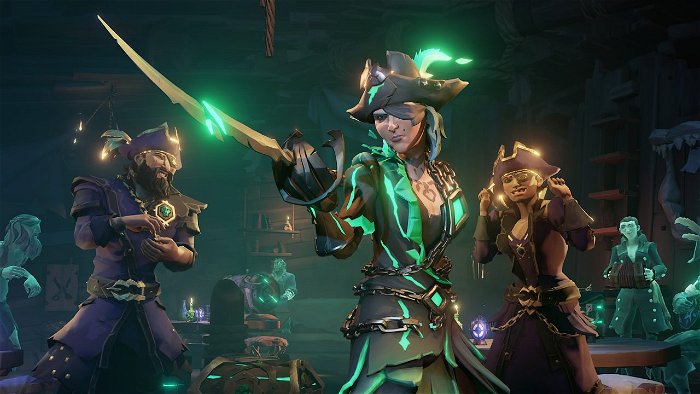
Other notable Microsoft-centric games including Rise of the Tomb Raider became a timed-exclusive which kept faith in owning an Xbox One, while the Forza franchise continued to give a premiere driving simulator. Dead Rising 4 would get a similar timed-exclusive treatment until it launched a year later for PS4. Halo 5: Guardians was also complimented with Rare Replay, which exclusively compiled 30 treasured games from the developer since their conception. Rare was also one of Microsoft’s close third-party developers who developed special titles for their platforms. It came to a head as Remedy developed Quantum Break as their last Xbox-exclusive game before going open with future releases. The game, released in 2016, doing plenty to create a true next-gen shooter with time travelling elements and the Xbox One’s best looking graphics. Its spiritual successor, Control, would go on to release as a shared third-party game with PS4 (in what could have been Xbox One’s golden goose). Luckily, Rare had another trick up their sleeve. Sea of Thieves would cultivate a respectable community of players over the Xbox One and PC. It was also knitted together with the Xbox Game Pass, an evolved service which builds off the Play Anywhere system. Instead of sharing games on PC and Xbox One, users could now stream exclusives over a subscription which worked on phones too. In turn, Microsoft’s vision for gaming went beyond the Xbox One console. Its Xbox One games technically no longer required a system to play, as long as users had a stable internet connection for xCloud and a controller.
Like the 360, the Xbox One would see a few additional hardware changes. This started with a slimmer and affordable Xbox One S console which kept the same horsepower as its original in a refreshing form factor. Its latest re-release, the Xbox One X, comes with harder-hitting internals which improve performance and add 4K support for existing games. As an answer to the PS4 Pro, the One X holds its own as a premium Xbox console that does enough to handle the newest titles like Call of Duty Black Ops Cold War, Assassin’s Creed Valhalla and Cyberpunk 2077.
2020 – beyond: Xbox Series X/S
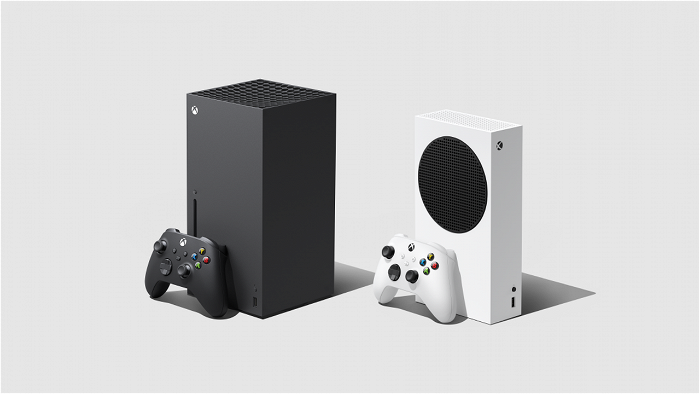
The Xbox One struggled to replicate the same hype as the 360 once did. Its lack of exclusives drew consumers towards other competitors while owners made the best out of a dozen high-caliber releases. Its evolution of the Play Anywhere to Xbox Game Pass Service gave users option beyond the One console. Through finding their identity with high-caliber franchises in the Xbox 360 and facing challenges with Xbox One, Microsoft braces for another generation. Its Xbox One console paves the way for Xbox Series X which could be a fresh start. In what’s left of the Xbox One’s life cycle, it shares some of the Series X’s exclusives including Halo Infinite. But the Series X draws on its past as a strength during a lighter year of game releases.
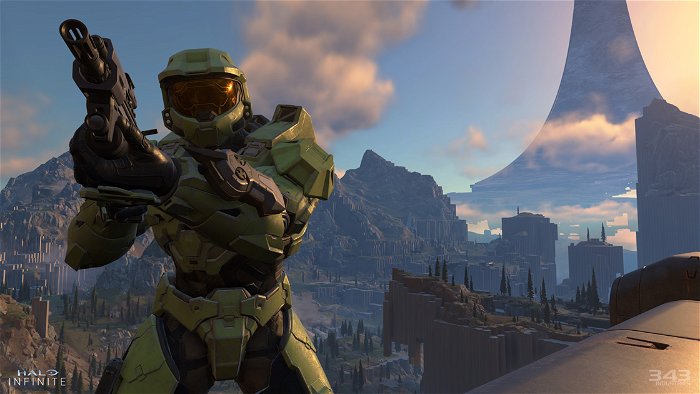
Day One buyers won’t get any first-party exclusives for the Series X just yet, but have their entire Xbox library ready to go through backwards compatibility. This is where it takes a slight jab at the PlayStation 5 for giving users the power to collect their favourite digital games (since the original Xbox) in one place. It’s worth noting older games on Series X get visual upscaling, 60 fps boosts and other performance enhancements. For Series X owners, it’s a promising start into the ninth generation of games with a peaceful breather. The console still delivers its next-gen impressions with a slew of fresh launch titles which include Assassin’s Creed Valhalla, Yakuza Like a Dragon, NBA 2K21 and Black Ops Cold War. Like the PS5, it’s sold-out demand spurs a renewed love for Xbox who hold their own without first-party selections at launch.
Ahead of a new chapter for Xbox, the next console starts with a history lesson and celebration of games which set them on their journey twenty years ago.








